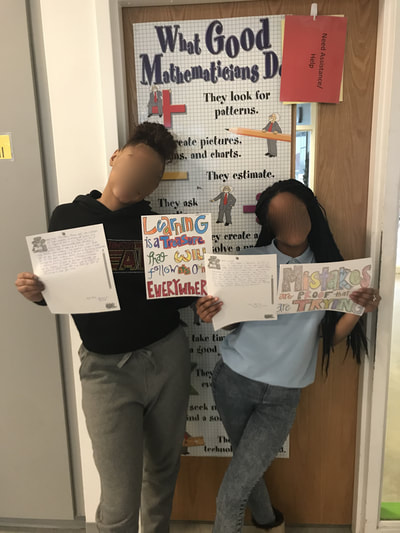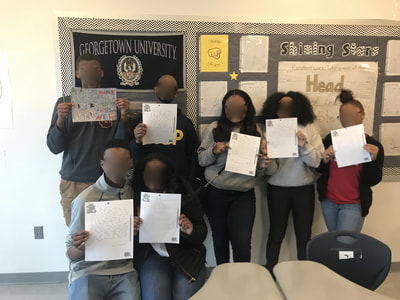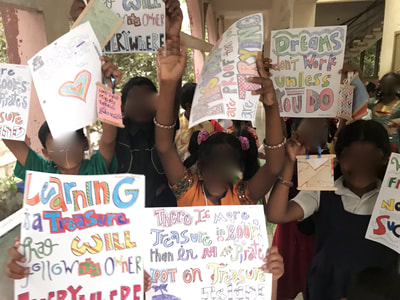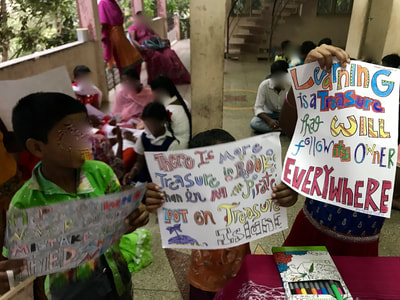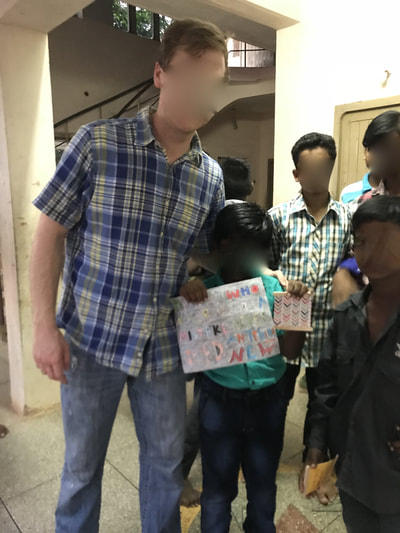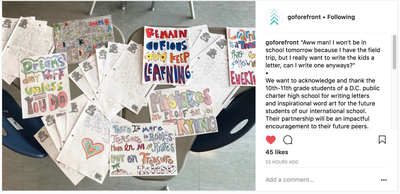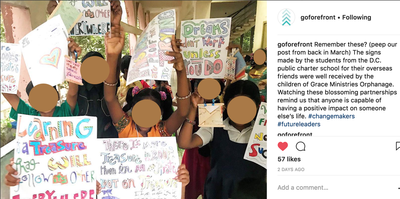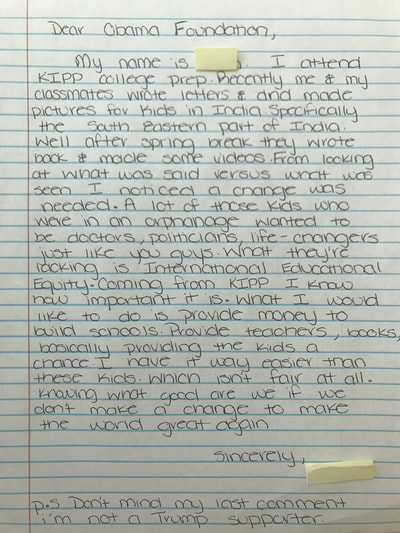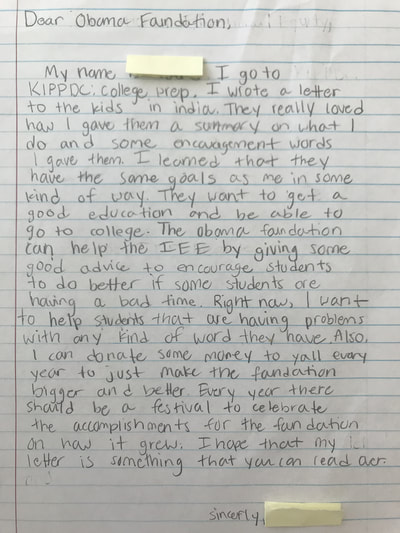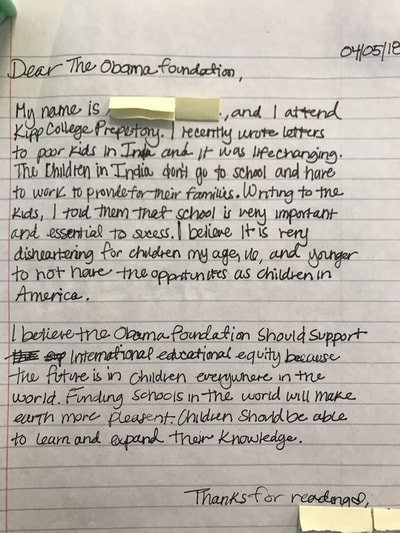International Educational Equity
INTERNATIONAL EDUCATIONAL EQUITY OVERVIEW
Planning and implementing a lesson on international educational equity not only impacted my classroom environment, but also my students' understanding of themselves. Students were empowered to be advocates of international educational equity. On weekday evenings and weekends, I work as the education lead at a non-profit called FOREFRONT. FOREFRONT’s mission is to enable every person, equip leaders, and establish self-sustaining communities through a four-phase approach: clean water / sanitation, education, medical care, and social justice. Before teaching this lesson, my students knew a little about my work with FOREFRONT, but I wanted to show them how they can be advocates of international educational equity too. I created an interactive lesson on international educational equity, in which students practiced advocacy through letter writing, inspirational drawings, and a social media campaign.
Please scroll down or click on the table of contents below to learn more about how my students are advocates of international educational equity.
TABLE OF CONTENTS
Lesson Presentation
Letters to First-time Students
Educational Equity Word Art
Social Media Campaign
Letters to the Obama Foundation
Teacher Reflection
Planning and implementing a lesson on international educational equity not only impacted my classroom environment, but also my students' understanding of themselves. Students were empowered to be advocates of international educational equity. On weekday evenings and weekends, I work as the education lead at a non-profit called FOREFRONT. FOREFRONT’s mission is to enable every person, equip leaders, and establish self-sustaining communities through a four-phase approach: clean water / sanitation, education, medical care, and social justice. Before teaching this lesson, my students knew a little about my work with FOREFRONT, but I wanted to show them how they can be advocates of international educational equity too. I created an interactive lesson on international educational equity, in which students practiced advocacy through letter writing, inspirational drawings, and a social media campaign.
Please scroll down or click on the table of contents below to learn more about how my students are advocates of international educational equity.
TABLE OF CONTENTS
Lesson Presentation
Letters to First-time Students
Educational Equity Word Art
Social Media Campaign
Letters to the Obama Foundation
Teacher Reflection

